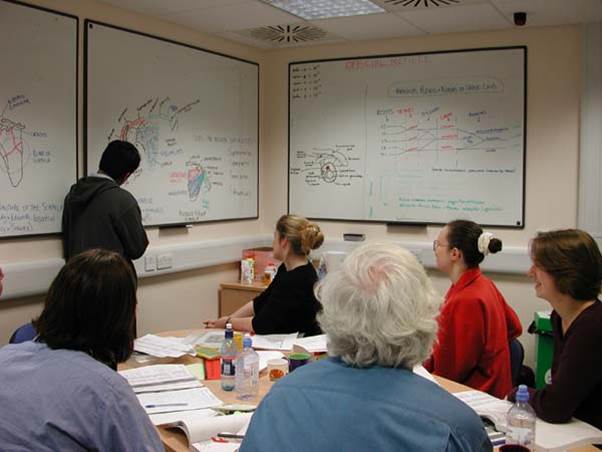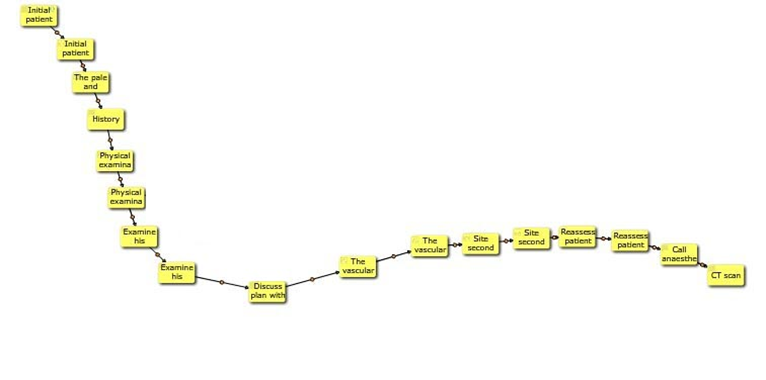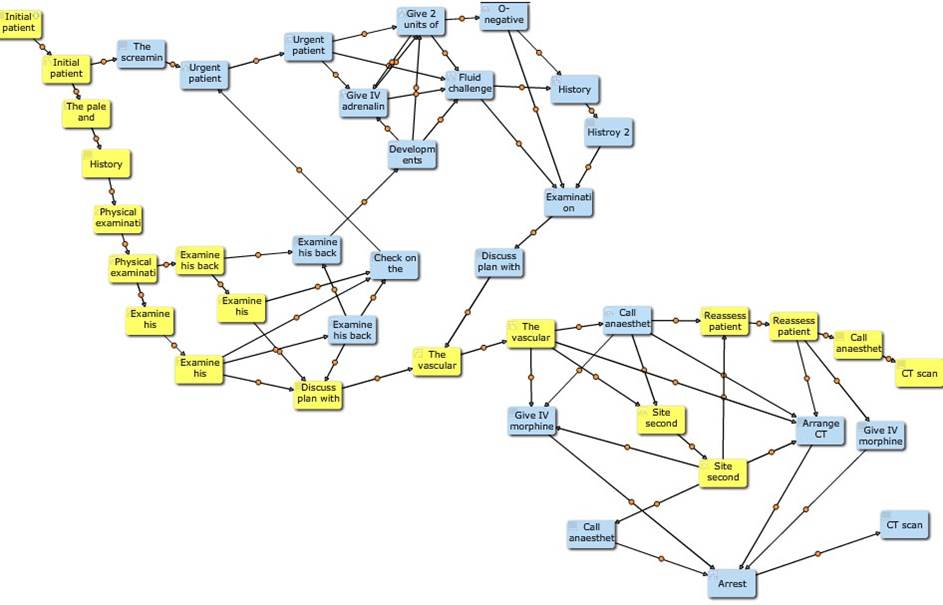The Project | Background | Project Team | Impact & Benefits | Virtual Worlds | Useful Links
T-Year at St George’s:
In 2007, St George’s merged its undergraduate medical courses into a single course, with separate entry pathways for graduates, school-leavers, and non-traditional learners from under-represented sectors. The key phase in which all these learners come together is a transitional year, known as the T-year, which alternates campus-based learning blocks with clinical attachments. Thereafter, all students are integrated for senior and final clinical attachments. St George’s T-year is built around a Problem-Based Learning programme.
Problem-Based Learning (PBL):
Medicine and Healthcare education has been using this approach in the UK since the mid 1980s. In this approach, students work in teams to explore, manage or solve a problem. Guided by a tutor they share their existing knowledge and understanding relevant to an unfolding scenario, agreeing on what they need to learn and how to carry it out.
For more information about PBL have a look here or in the Project Final Report.
 PBL group
PBL group
Why “Generation” 4?
Our teaching and learning activities have increasingly adopted the approaches of practitioners in medicine and healthcare in a way that builds on generations of pedagogical paradigms. These paradigms are described below.



